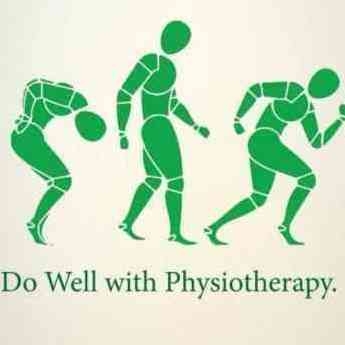+918042754929

This is your website preview.
Currently it only shows your basic business info. Start adding relevant business details such as description, images and products or services to gain your customers attention by using Boost 360 android app / iOS App / web portal.
The relationship between foot and gluteus maxim...
The relationship between foot and gluteus maximus. Are they co-related? Maybe? Or not? Lets think of what creates the medial arch of the foot? Peroneus longus, abductor hallus and tibialis posterior. These thress muscles play a key role in stabilising foot as well as hip. Why hip? According to anatomy train, each of them contributes to different myofascial line. 1. Peroneus longus is involved in lateral line. It is connected to deep gluteal muscles. If one of them is not functional, the other one can be affected. 2. Tibialis posterior is invloved in deep front line. It is engaged with hip adductors, pelvic floor and diaphragm. Again, if its dysfunctional, the upper part of the lower limb can be affected. 3. Abductor hallucis is involved in spiral line as well as deep front line since it is connected to tibialis posterior and peroneus longus. Foot is as important as glutes. If overpronation of foot presents, thoes muscles can be overloaded then the glutes may not be able to contract effectively which can lead to lower limb injuries, lower back pain and others. According to research, ankle pronation activates medial part of hamstring. Conversely, ankle supination contributes to the contraction of lateral hamstring. Why am I mentioning this? Imagine. What if overpronation of the foot happened? You are losing your medial arch which should be supported by abductor hallucis. Then, it facilitates adductor hallucis which can deviate your 1st MPJ into adduction. This toe deformity can result in reduced 1st toe plantar flexion. This is needed for you to push off sufficiently. If not, what can happen? Yes. You are losing hip extenxion. Your gluteal contraction can be limited as a result. Therefore, this type of people have overactivation of hamstring. Overpronation of the foot may be associated with underactive glutes and overactive hamstring. Therefore, releasing the plantar foot muscles with a tennis ball often increases the flexibility of the tight hamstring. Try it :) Overpronated foot encourages internal rotation of tibia and femur then the glutes dont have a proper postion to fire itself. So... what? Add your foot exercise to your rehab. If foot is dysfunctional, glutes are not firing that can affect your core eventually. If glutes are not functional, the other way around can be expected.

